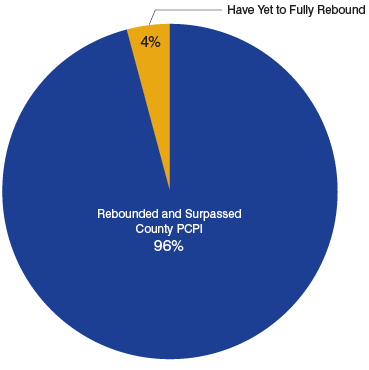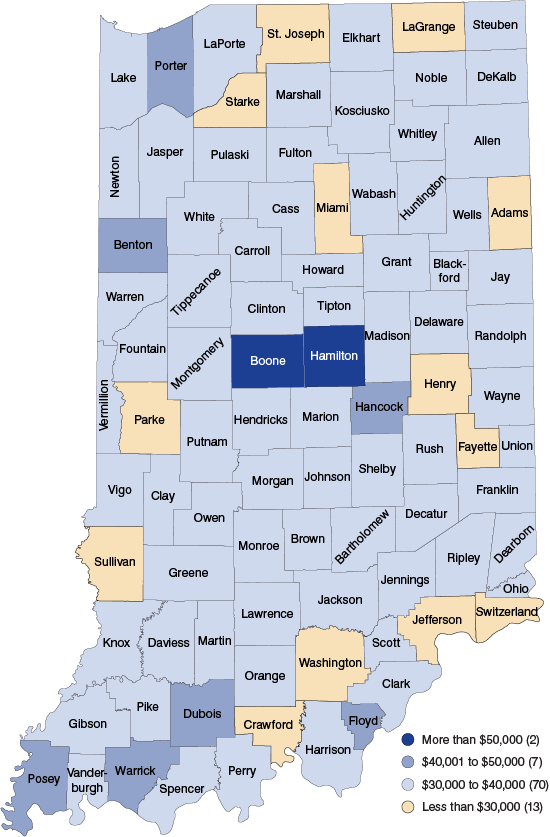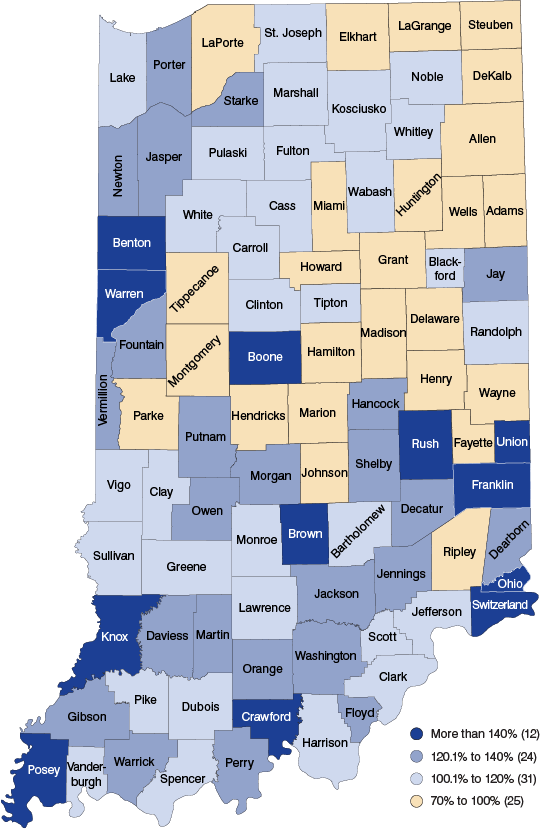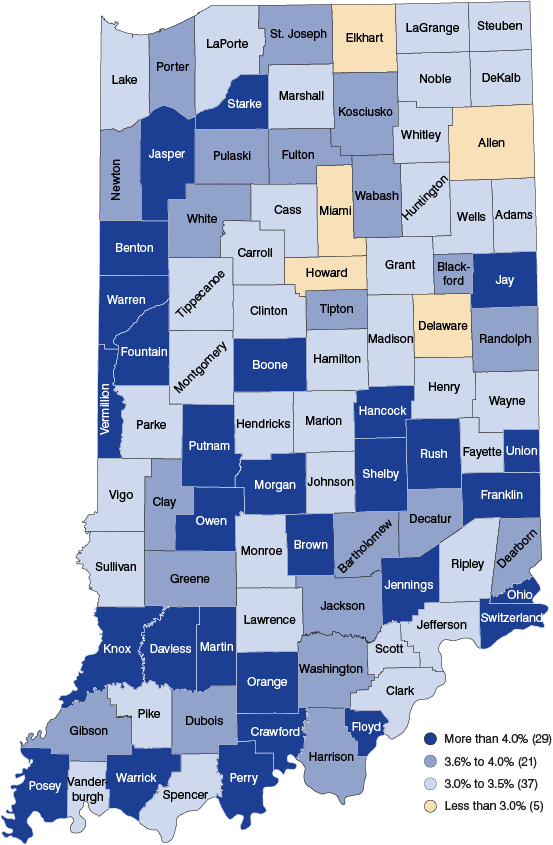Per Capita Income Recovery: Indiana Counties
By 2011, 96 percent of Indiana counties had not only returned to their 2008 per capita personal income (PCPI) levels, they had surpassed them. The positive county growth percentages ranged from 0.04 percent to 13.6 percent. Four counties proved particularly resilient during the recession and the generally slow recovery and posted year-over-year growth in PCPI from 2008 to 2011 (see Figure 1).
Figure 1: Relative Status of Per Capita Personal Income, 2008 (Recession) to 2011 (Recovery)

Source: Indiana Department of Workforce Development, using Bureau of Economic Analysis data
To better understand Indiana county income dynamics, a time series analysis was conducted using PCPI levels from 1990 to 2011, using Bureau of Economic Analysis (BEA) data from the Hoosiers by the Numbers website (www.hoosierdata.in.gov).
Using nominal dollars, PCPI was ranked based on three criteria:
- 2011 PCPI
- Total Percent Growth in PCPI from 1990 to 2011
- Average Annual Percent Growth in PCPI from 1990 to 20111
Figures 2 through 4 illustrate these data and you can also download the spreadsheet.
Figure 2: Indiana County Per Capita Personal Income, 2011

Source: Indiana Department of Workforce Development, using Bureau of Economic Analysis data
Figure 3: Per Capita Personal Income Total Percent Growth, 1990 to 2011

Source: Indiana Department of Workforce Development using Bureau of Economic Analysis data
Figure 4: Average of Annual Percent Growth in Per Capita Personal Income, 1990 to 2011

Source: Indiana Department of Workforce Development, using Bureau of Economic Analysis data
The latter two criteria tended to favor less populated counties. As two of the three criteria are based on growth rates, smaller counties can be influenced by events which would not significantly influence a large county. For example, the addition of a major factory in a rural county will have a much larger impact on PCPI than if the same factory was to locate in a heavily populated county. Heavily populated counties tend to exhibit increased stability with respect to PCPI growth rates. For this reason (and others), the results are not intended as a qualitative assessment of the counties.
The positive trend in PCPI growth appears to be strengthening. From 2010 to 2011, 99 percent of counties experienced growth in their per capita incomes. National events notwithstanding, county PCPI has stabilized since the recession and is showing growth in Indiana.
Notes
- The percent change for each year from 1990 to 2011 was calculated for each county. These yearly growth rates for the county were then averaged. The purpose of this category was to somewhat discount income variation. A county could have had only a few excellent years of growth followed by many years of lackluster growth, so this category places weight on consistently growing counties.
